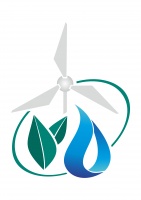Establishment of the Southern Fergana Main Canal Water User Union (SFMC-WUU)
| Title | Establishment of the Southern Fergana Main Canal Water User Union (SFMC-WUU) |
|---|---|
| Category of tools | Integration principle |
| Field of application | Use of water resources |
| Usability of practice for adaptation to climate change | Moderate |
| Implemented by | Scientific and Information Center (SIC) of Interstate Commission for Water Coordination (ICWC) and Swiss Agency for Development and Cooperation (SDC) |
| Used by |
Country: Uzbekistan Province: Andijan Region |
| Practice also applied in the following localities |
Fergana Region |
| Local specifics |
Kara Darya River Basin; Southern Fergana Main Canal (SFMC), allotted area – 89 270 ha, number of water users – 34 WUAs. |
| Practice usage period |
Start date: 01.01.2007 End date: 31.12.2007 |
| Problem solved through this practice |
Low level of coordination among WUAs – as a rule, each WUA liaises independently with its water management organization (WMO). |
| Tools used in the practice |
Methods of integration and social mobilization |
| Description of the practice and its results |
The SFMC-WUU is an association of legal entities in the form of Union – a voluntary independent non-profit public organization uniting legal entities (i.e. WUAs) based on common interests with the aim of coordinating actions and protecting shared interests and rights. SFMC-WUU operates as per the Charter approved at the general meeting of water user representatives, has its own stamp and bank account. Actions: The creation of SFMC-WUU began with the establishment of the Initiative Group (IG). The IG consisted of active water specialists, representatives of water users and other stakeholders who saw the need to transit to IWRM. Further on, the IG carried out social mobilization, drafted necessary documents (the Union’s Charter, etc.), organized the general meeting of water users that approved the Charter and established the Union’s Council (Board). After that, SFMC-WUU underwent legal registration and officially launched its work. Results:
|
| Lessons learnt and recommendations made |
Lessons learnt: SFMC-WUU performance depends on internal and external factors: capacities (financial, institutional, etc.) of its members (i.e. WUAs) and the level of democracy and market development in the country. In turn, the growth of capacities of SFMC-WUU members depends on SFMC-WUU performance. Recommendation: Currently, WUAs capacities are rather poor which is reflected in SFMC-WUU own underperformance. Considering that WUA represent the weakest link in water hierarchy and the role of water users in addressing national food, water and environmental security needs, the government should find opportunities to support (first of all, financially) WUAs/SFMC-WUU during transition period (until they become self-sufficient). |
| Source of practice |
Foreign tools (transfer of foreign experience) |
| Brief information on the project |
Project title: Integrated Water Resources Management in the Fergana Valley (IWRM-Fergana). Project duration: Jan 01, 2001-Dec 31, 2012 (12 years). Project goal and objectives: overall project goal was “to contribute to safer living, environmental sustainability and wider social harmony, to support rural restructuring in Central Asian countries by enhancing water resources management based on the example of the Ferghana Valley”. Project beneficiaries: WUAs, farmers in project sites. Project implementer: IWMI, SIC of the ICWC, Project Steering Committee (PSC) consisting of 3 representatives of the Ministries of Agriculture and Water Management (MAWM) of project target countries, 3 heads of Regional Water Administrations hosting project target sites. |
| Funding source | Grant from the Swiss Government via SDC |
| Information sources |
N.N. Mirzayev, Guidelines on IWRM Streamlining, Volume 1 (Institutional Aspects), Tashkent, 2011. |
| Form submission date | 04.05.2018 |
| Print Compare with other practice |




